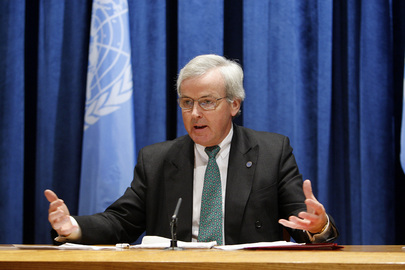In a U.N. survey, 52% of Afghans said foreign aid organizations 'are corrupt and are in the country just to get rich.'
By WILLIAM EASTERLY
In June, this newspaper broke the story of how Afghan officials were literally stuffing suitcases with aid money and flying out of the country. As a result, the House foreign aid appropriations subcommittee voted to cut $4.5 billion from the U.S. aid program to Afghanistan.
The situation in Afghanistan is not unique. Indeed, the United States Agency for International Development (USAID) has long been plagued by accusations of corruption and lack of transparency. But foreign aid bureaucracies traditionally have two contradictory mandates: 1) We must not give aid to corrupt recipients; and 2) We must spend the entire aid budget. No. 2 usually beats No. 1. Aid agencies put a glossy face on this outcome, which makes the victory of corruption even more likely.
An Afghan government report in 2008 (the "Kazimi report") detailed abundant corruption and suggested that aid inflows contributed to it. USAID's own report in 2009 said "corruption is now at an unprecedented scope in the country's history" and that the "tremendous size . . . [of] development assistance . . . increase[s] Afghanistan's vulnerability to corruption." According to Transparency International, Afghanistan went from the 42nd most corrupt country in the world in 2005 to the second most corrupt in 2009 (Somalia was first).
The 2009 USAID report noted that domestic Afghan anticorruption efforts fail because "often the officials and agencies that are supposed to be part of the solution to corruption are instead a critical part of the corruption syndrome." Yet it recommends providing more "resources" to these same corrupt anticorruption fighters.
The report correctly noted that part of the solution to corruption is "transparency and accountability." True, but USAID itself lacks transparency and accountability. The report fails to mention a single USAID program that has suffered from corruption.
I run a blog called Aid Watch together with Laura Freschi at New York University. When we contacted USAID after its 2009 report was released to ask how this could be so, we started informative discussions with the Afghan country desk. Unfortunately, the USAID Press Office quickly intervened, saying that any response had to come from them. Then they failed to provide any such response.
Others have had similar experiences. Till Bruckner, a field-based researcher on corruption in the Republic of Georgia, asked USAID for information on the budgets of the NGOs they funded there. When USAID refused, he filed a Freedom of Information Act request in May 2009. After months of stonewalling, USAID finally responded last month, with copies of NGO budgets—but much of the key information blacked out.Why such impunity? Discussion about corruption in aid has been abundant since then World Bank President James Wolfensohn broke a longstanding taboo on the subject in a speech condemning corruption in 1996. Yet the share of the most corrupt recipients in foreign aid is actually higher today than it was in 1996.
Aid recipients understand unconditional conditions all too well. Afghanistan President Hamid Karzai knows that USAID will have to spend its Afghanistan budget no matter what, so he makes some token commitment, does nothing, and indeed the aid keeps flowing.
I can certainly understand why USAID would prefer not to talk about this unsavory equilibrium. But the stakes are far higher in Afghanistan than in the usual aid recipient.
As the war there drags on, we have to ask the following question: Is U.S. aid winning hearts and minds? A U.N. survey taken in January found that 52% of Afghans believe aid organizations "are corrupt and are in the country just to get rich." I don't know much about waging a counterinsurgency, but it seems to me that we're getting very little for our money.
Mr. Easterly is a professor of economics at NYU and author of "The White Man's Burden: Why the West's Efforts to Aid the Rest Have Done So Much Ill and So Little Good" (Penguin, 2007).





















































